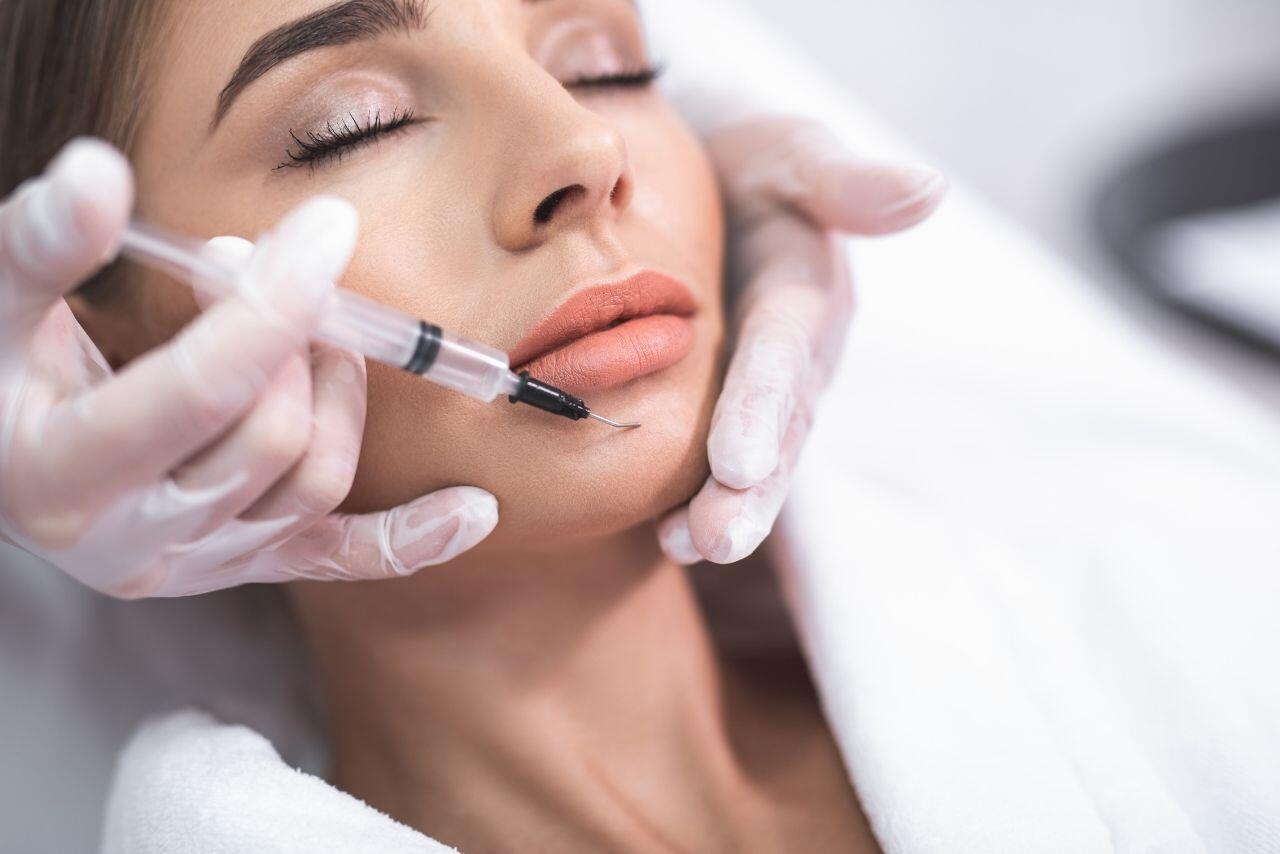
The chin is the facial area under the lower lip. A well-shaped chin is considered very important, as it helps to balance overall proportion of the face. Unfortunately, some patients are affected by various aesthetic imperfections in the chin such as wrinkles, recessed bone contour, and an unrefined jawline. Fortunately, these imperfections can be corrected using either surgical procedures or dermal filler injections. Dermal filler injections are usually chosen by patients due to their efficacy, simplicity, ease of reversibility, and shorter recovery time versus invasive surgical procedures.
How does Restylane help to correct an undefined chin?
Patients who are considering augmenting the shape of their chin non-surgically can choose Restylane, a brand of cosmetic injectables manufactured by Galderma. Restylane fillers contain non-animal stabilized hyaluronic acid (NASHA) that is produced via biofermentation. These synthetic hyaluronic acid molecules are reticulated with each other to form a viscoelastic gel. Restylane, which is composed of 20mg/ml of NASHA, is often used to treat the chin area. The larger hyaluronic acid particles make this gel highly viscoelastic and thick enough to correct volume deficit in the deep skin planes found in the chin region. Once injected into the chin, the malleable gel will instantly provide support and volume to the surrounding tissues, resulting in a well-sculpted chin. View our comprehensive selection of authentic Dermal Filler products.
How long will the results last?
Once implanted into the skin, Restylane dermal filler sculpts the chin for approximately 6 to 12 months. The patient’s age, severity of aesthetic imperfection, health status, and general lifestyle will affect the effective time of this filler. In addition to patients’ physiological factors, the volume of filler administered, and the injection technique utilized, will also alter the duration of action. Patients can always get more injections once the chin starts losing its sculpted appearance.
Are the effects reversible?
Yes, the aesthetic outcomes of Restylane can be easily reversed using hyaluronidase injections. Hyaluronidase is a naturally-occurring enzyme that can break down both natural and synthetic hyaluronic acid molecules. Patients who are left with undesirable effects of Restylane such as the Tyndall effect, hematoma, discoloration, and palpable lumps can have their filler dissolved prematurely with the use of hyaluronidase injections.
What are the side effects of Restylane filler injections?
Though Restylane implantation is generally well-received by patients, they could still experience some localized inflammatory reactions including pain, tenderness, redness, swelling, itching, and bruising. These injection-site reactions are mild in nature and should resolve by themselves within 1 to 2 weeks.
That being said, patients who are taking substances that affect the platelet function, such as nonsteroidal anti-inflammatory drugs, may experience increased bruising or even bleeding at injection sites. As part of proper aftercare treatment, patients should minimize exposing the treated regions to conditions with extreme temperatures such as direct sunlight, sauna, steam rooms and extreme cold until the initial swelling and redness had dissipated.
Is the filler integrated with an anesthetic agent?
Restylane is available with and without the inclusion of lidocaine, a fast-acting pain numbing agent. Patients with low pain tolerance can opt to be treated using Restylane with Lidocaine for maximum comfort during the treatment session.

About the Author: Doris Dickson is a specialist writer for Health Supplies Plus, focusing on the aesthetic medicine industry. She diligently researches cosmetic treatments and products to provide clear, concise information relevant to licensed medical professionals. Her work supports Health Supplies Plus’s commitment to being a reliable informational resource and trusted supplier for the aesthetic community.
Disclaimer: The content provided in this article is intended for informational purposes only and is directed towards licensed medical professionals. It is not intended to be a substitute for professional medical advice, diagnosis, or treatment, nor does it constitute an endorsement of any specific product or technique. Practitioners must rely on their own professional judgment, clinical experience, and knowledge of patient needs, and should always consult the full product prescribing information and relevant clinical guidelines before use. Health Supplies Plus does not provide medical advice.
